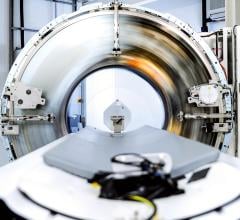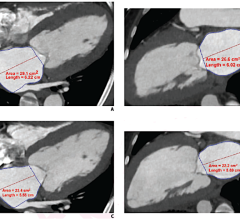
May 8, 2015 — Neurosurgeons at the University of California-Los Angeles (UCLA) are using Oculus Rift virtual reality headsets used in gaming to be transported inside their patients’ brains. The UCLA Department of Neurosurgery is collaborating with Surgical Theater LLC to integrate the Oculus Rift with Surgical Theater's 3-D surgery navigation device called SNAP.
The navigation virtual reality scene is built based on patients’ specific computed tomography (CT) and magnetic resonance imaging (MRI) scans, providing the potential for the surgeon to enter the virtual brain, examine the brain tumor or aneurysm, and plan the surgical strategy and operative steps. This promises to improve precision and surgical outcomes while decreasing surgical time.
Neil Martin, M.D., chairman of the UCLA Department of Neurosurgery, premiered the Oculus Surgical Theater at the 2015 American Association of Neurological Surgeons (AANS) annual meeting May 2-6 in Washington, D.C. This is the first time Oculus Rift technology is being used in the medical arena—for brain surgery.
Over the last several months, Martin and his team have been employing Oculus Surgical Theater, which combines a 3-D virtual reality surgical navigation with the Oculus Rift headset. The system features accurate stereoscopic 3-D views as well as excellent depth, scale and parallax of the brain. Martin enters and interacts within the anatomy of the brain to see not only the brain tumor or aneurysm, but also every connected vessel and structure.
“Using the Oculus Surgical Theater is an immersive experience; you are standing there and facing the tumor, moving your head so you can see behind, to the left and right, so you can see the vessel that is covering the tumor from a certain angle or direction,” he said. “The virtual experience is similar to touring a house; after a few minutes of ‘being there,’ your memory is equipped so you know exactly where the front door, back door and garage are. It translates to superior situational awareness and navigation capabilities inside the patient’s brain.”
This innovative visual representation of a patient’s brain is potentially key to ensuring a successful surgery before the first incision is even made. By employing this technology, surgeons will be able to examine the best ways to protect and preserve areas that control motor and language function, depending on the location of the tumor or aneurysm. The Oculus Surgical Theater is expected to improve microsurgery, such as when Martin is operating through a microscope and a keyhole, dime-sized incision on structures that are often only just a few millimeters in size.
Research on virtual reality conducted at Stanford University found that the brain absorbed spatial details 33 percent more effectively in immersive VR than from video alone. Much like how a professional athlete practices to increase their performance, the Oculus Surgical Theater gives surgeons the ability to virtually plan a surgery tactic on brain tissue and blood vessels that look just like those inside the brain, all while building a strong foundation of situational awareness and memory for the surgeon.
“Every patient is unique, so being able to virtually see and study the structure of each individual brain tumor, or aneurysm, prior to and during surgery will increase our confidence and precision during the most complex neurosurgical procedures. I believe it will decrease operative time, and improve surgical outcomes for our patients,” Martin said.
The Oculus Surgical Theater is under final testing at UCLA and will be evaluated in surgeries in the coming weeks.
For more information: www.neurosurgery.ucla.edu


 February 01, 2024
February 01, 2024 








